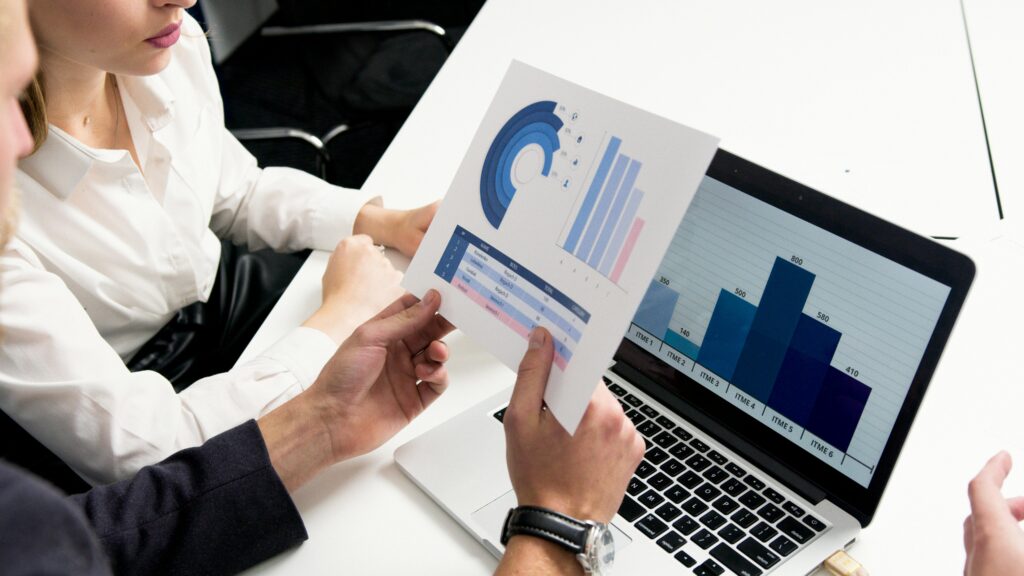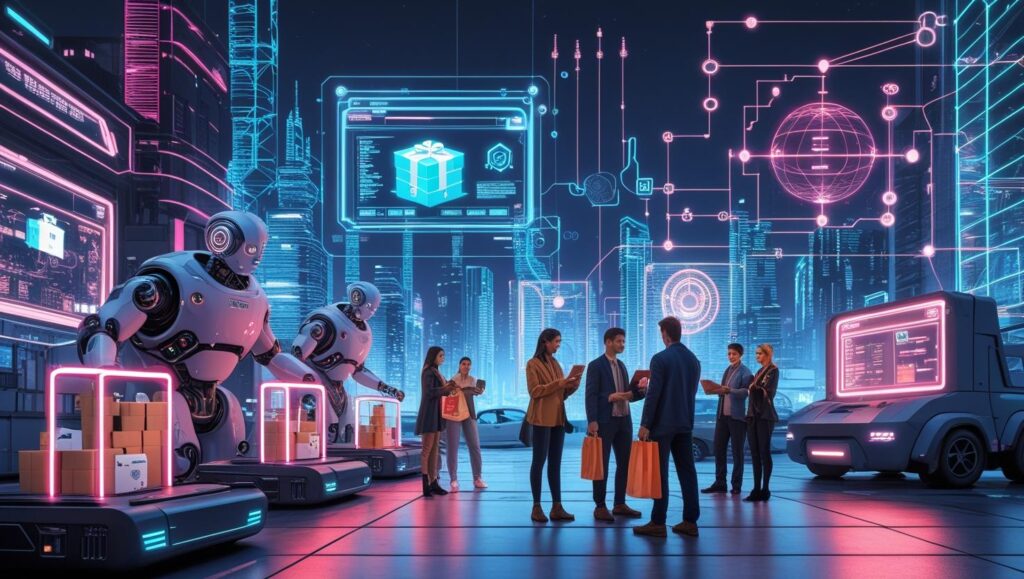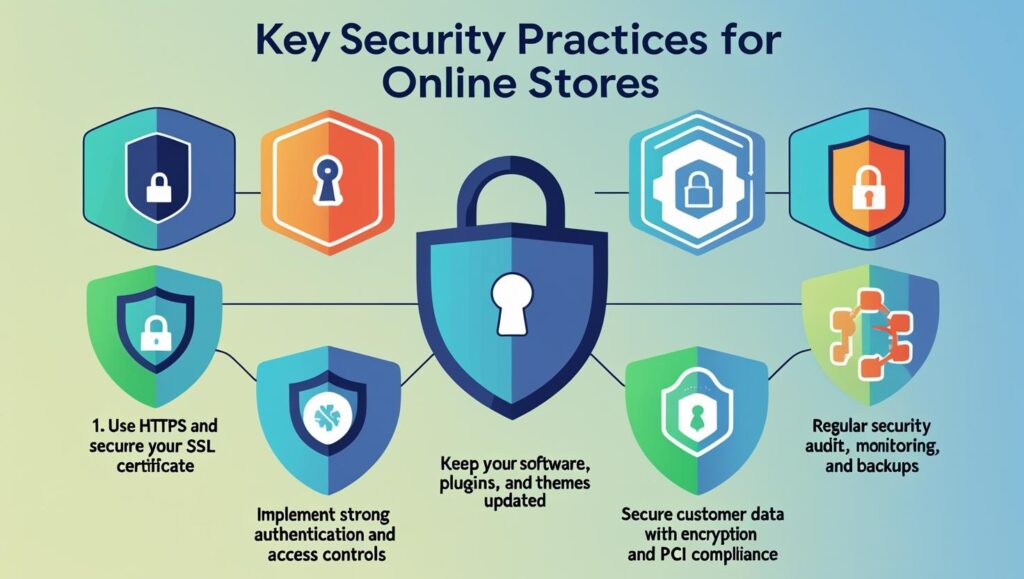Enterprise Resource Planning (ERP) systems are now a crucial component of how modern businesses operate. ERP helps organizations streamline their core business processes, including finance, HR, manufacturing, sales, and supply chain, and provides a single source of truth.

Since 2022, the ERP market has seen an increase of 8%. And studies show that 1.4 million companies will spend $183 billion on ERP systems. This figure makes up a whopping 17.9% of total IT software spend, and 5% of overall IT spending. This is no surprise given that businesses rely a whole lot on ERP as it eliminates unnecessary processes and automates tedious tasks, which cuts down on costs.
In this article, we will discuss the top 5 ERP trends defining 2025.
- AI-Driven ERP for Faster, Smarter Decision-Making
Al and ML aren’t just a trendy term, nor does it come in a ‘maybe’ option–it is essential. The ERP platforms are converting into an intelligent digital system, giving real-time information and the ability to make predictions that speed up the process of making decisions.
Key Benefits:
- Predictive forecasting: AI models are used to predict maintenance schedules, inventory needs, and sales.
- Virtual Assistants: Chatbots speed up processes, make navigation easier, and provide answers to customer questions.
- Anomaly detection: AI identifies any operational or financial issues present before they become a more serious issue.
Example: –
Largify Solutions integrates AI-based analytics and automation into its ERP deployments. Many people are already embedding AI in their cloud ERPs to generate real-time insights and suggest process improvements.
- Cloud-Native ERP Becomes the Default
Cloud ERP solutions are now being rapidly adopted by businesses for growth and faster adaptation to changing market needs. Previously, on-premises ERP systems were used as they couldn’t entrust their business to the cloud. But that has changed due to the flexibility, scalability, and cost-effectiveness of cloud ERP.
Gartner studies show that in 2025, 90% of new ERP deployments will be cloud-hosted. Statista reports that ERP software revenue is estimated at about $55.88B in 2025, reaching $65.29B by 2029, seeing an annual growth of 3.97%.
Cloud ERP benefits both small medium-sized enterprises (SMEs) and large enterprises alike.
Key Benefits:
- Extensibility: Easily expands to accommodate business expansion.
- Savings: Lowers the cost of IT and infrastructure upkeep.
- Anywhere Access: Facilitates decentralized teams and remote work.
- Real-time insights: Improve decision-making based on data and agility.
- Easy Integration & Automatic Updates: Maintains systems up to date and linked.
- Support for Edge Computing: Enhances dependability and speed near data sources.
Example: –
Largify Solutions offers industry-specific modules for sectors including e-commerce, shipping, and textiles using microservices architecture. They also offer safe, high-availability ERP hosting settings that facilitate round-the-clock access, real-time data syncing, and quick disaster recovery thanks to partnerships with cloud providers like AWS and Azure.
Global businesses can operate with real-time data across finance, human resources, and logistics from a single platform with SAP S/4HANA Cloud.
- Modular and Industry-Specific ERP Solutions
Traditional monolithic ERP solutions are now the talk of the past. In 2025, companies will need industry-specific, modular ERP suites that are easy to scale, install, and adapt.
Trend Highlights:
- Vertical ERP systems for shipping, manufacturing, healthcare, and education.
- Configurable modules (HR, finance, CRM, supply chain) using industry presets.
- Platforms with minimal code that enable internal IT departments.
- Manufacturing ERP provides capabilities for supply chain management, quality control, and real-time production monitoring.
- Healthcare ERP manages patient records, compliance requirements, and inventory for medical supplies.
- Retail ERP enhances omnichannel retail operations, inventory tracking, and customer relationship management.
Example: –
Largify Solutions has created ERP templates that cut deployment times by 40% for SMEs in the pharmaceutical, educational, and agricultural sectors. Their adaptable modular strategy enables customers to begin simple and add features as required.
For industries like healthcare, fashion, and automotive, customized ERP suites are provided that enable better compliance and a quicker return on investment.
- ERP and IoT Convergence
ERP ecosystems now significantly incorporate the Internet of Things (IoT). ERP systems are receiving real-time data from devices in manufacturing facilities, warehouses, and delivery fleets for real-time monitoring and optimization.
IoT capabilities of ERP systems gather and evaluate real-time data from linked devices, including sensors, GPS modules, and machines, to facilitate more intelligent decision-making.
Alphabet Inc. CEO Sundar Pichai emphasizes the value of technology integration by saying, “Organising the world’s information across every input, making it accessible via any output, and combining the world’s information with the information in YOUR world, in a way that’s truly useful for you.” This statement explains how the IoT ERP ecosystem works by combining external and internal data sources into a single, actionable platform.
Key Benefits:
- Tracking assets and inventory in real time.
- Predictive equipment maintenance.
- Sustainability reporting and analytics on energy use.
Example: –
Largify Solutions incorporates fleet GPS systems into ERP dashboards in order to track deliveries and optimize routes in real time. Additionally, they provide IoT-enabled modules for pharmaceutical cold-chain monitoring.
IoT sensors in factories are integrated with Microsoft Dynamics 365 to automatically update ERP dashboards on equipment health and production output.
- Enhanced ERP Cybersecurity and Compliance
ERP systems hold sensitive business data, so as they become more connected and cloud reliant, cybersecurity, regulatory compliance, and data security have become critical. Customer data, proprietary systems, and intellectual property are all at risk from breaches, which can also lead to operational disruption, harm to one’s brand, and legal repercussions.
In order to avoid these risks, ERP business transformation strategies must incorporate end-to-end security measures, including encryption, access controls, user training, and incident response procedures.
With growing threats and data protection laws like GDPR and Pakistan’s PECA (Prevention of Electronic Crimes Act), ERP vendors are strengthening their defences.
Cyber-Security Trends in 2025:
- Multi-factor authentication and role-based access control.
- ERP-integrated real-time threat monitoring.
- Features for localization and data residency for compliance.
Leading Capabilities:
- Zero Trust Architecture (ZTA): Before allowing access, ZTA strictly verifies the device and the user.
- Real-Time Threat Detection: AI keeps an eye on user behaviour and spots unusual patterns.
- Integrated SOC 2, GDPR, HIPAA, and Industry Compliance: automates data classification, access control, and audit tracking.
- Blockchain Integration: To ensure tamper-proof recordkeeping in domains like finance or supply chain, some ERPs now include blockchain technology.
Example: –
Largify Solutions helps clients across South Asia and the Middle East comply with local and international regulations. They put strong security measures in place and provide ERP compliance audits that are suited to the demands of particular industries, such as banking, education, and pharmaceuticals.
Oracle Fusion Cloud ERP includes built-in compliance tools, risk management, and automated audit trails.
Conclusion
2025 is not just about updating ERP systems; it’s about running your business in a smarter, agile, and data-connected way. From AI-enhanced decision-making to industry-specific cloud modules and IoT integration, ERP systems are evolving into intelligent enterprise platforms.
It is about time that companies that are waiting for the perfect time implement these steps now before they get left behind in the competition.
Ready to Future-Proof Your Business?
At Largify Solutions, by fusing local knowledge with global innovation, we enable companies to fully utilize ERP. We can assist you whether you’re moving to the cloud, automating processes, or require an ERP tailored to your business.
Contact us today! and schedule a free consultation or ERP readiness audit.


Pingback: 10 Benefits of ERP in Business Growth - Largify Solutions